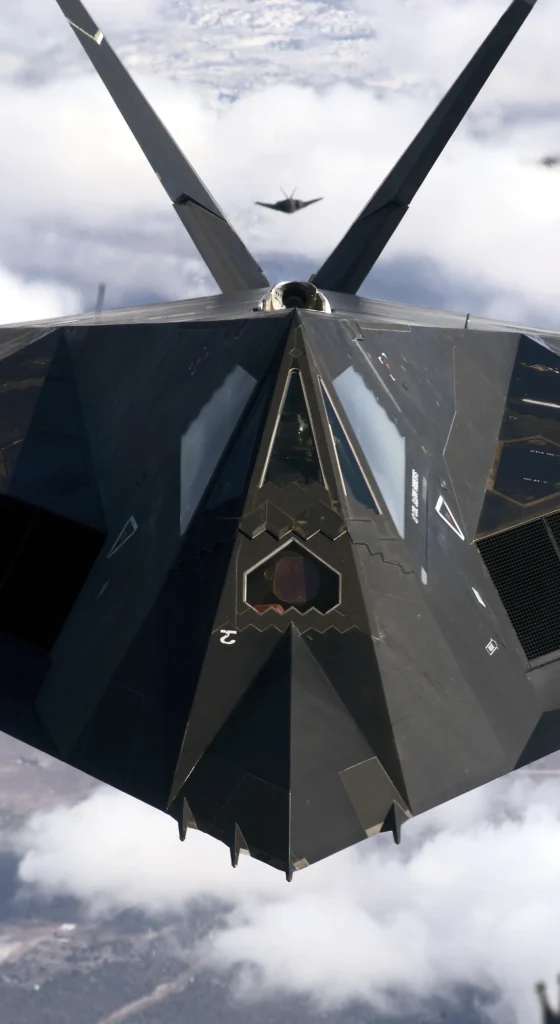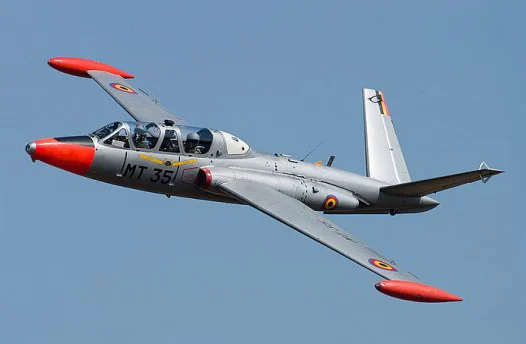For us AvGeeks, the skies are filled with a mesmerizing array of aircraft designs, the vast majority adhering to the classic formula of wings, a vertical stabilizer, and horizontal stabilizers. This tried-and-true configuration has served aviation well for over a century. However, the world of military aviation, in particular, often pushes the boundaries of convention, giving rise to fascinating outliers that dare to deviate from the norm, with the flying wing of the Northrop B-2 Spirit being a prime example.
AvGeeks with a penchant for the unconventional will also appreciate the intriguing history and resurgence of another distinct tail configuration: the V-tail. While not as ubiquitous as traditional empennages, the V-tail design, where the vertical and horizontal control surfaces are merged into two angled surfaces forming a “V,” has a lineage stretching back to the 1930s. Despite its long history, relatively few aircraft, both military and civilian, have adopted this unique feature, making those that do stand out. Perhaps the most iconic V-tailed military jet is the stealthy Lockheed F-117 Nighthawk, a testament to how specific design requirements can drive unconventional solutions.
Defining the “True” V-Tail: Beyond Slanted Stabilizers
It’s crucial to establish a clear definition of a V-tail to avoid confusion. Many modern military jets, such as the F-22 Raptor with its outwardly angled vertical stabilizers, might initially appear to have a V-tail. However, these aircraft also possess distinct horizontal stabilizers. For an aircraft to truly qualify for our V-tail discussion, it must feature only two rear control surfaces that meet, or nearly meet, in the center, effectively performing the functions of both vertical and horizontal stabilizers. With this definition in mind, let’s explore some notable military aircraft that embraced this distinctive design.
The Stealthy Enigma: Lockheed F-117 Nighthawk
As mentioned earlier, the Lockheed F-117 Nighthawk reigns supreme as the most recognizable V-tailed military jet. This revolutionary stealth attack aircraft, which first flew in the early 1980s, was designed to penetrate enemy airspace undetected. Its inherent aerodynamic instability meant it was entirely reliant on sophisticated computer-aided flight control systems. This instability was a direct consequence of the design priorities, where minimizing radar cross-section took precedence over conventional aerodynamic performance. The V-tail configuration, with its angled surfaces, contributed to the Nighthawk’s stealth characteristics by reducing radar reflections compared to a traditional tail. While it undoubtedly allowed the aircraft to fly, optimal handling wasn’t its primary purpose. The F-117’s V-tail is a compelling example of form following function in the pursuit of a specific military advantage.

A French Pioneer: The Fouga Magister
Stepping back a few decades, we encounter the Fouga Magister, a V-tailed jet trainer that, while perhaps less famous than the F-117, boasts significantly higher production numbers. This elegant aircraft first took to the skies in 1952 as a primary jet trainer for the French Air Force. In total, 929 Magisters were built, serving in the air forces of twenty-three countries – a stark contrast to the relatively limited number of operational F-117s (59). The V-tail design on the Magister originated from a glider that was experimentally fitted with a jet engine. It offered the advantages of simplified maintenance and optimized maneuverability for a trainer aircraft. However, the Magister also highlighted some of the inherent trade-offs of V-tails: while they can potentially reduce drag and weight, they often necessitate complex control systems and don’t always guarantee improved handling characteristics compared to conventional tails.

A V-Tail Renaissance: The Age of Military UAVs
While V-tails remained a relatively niche design in manned military aircraft, never quite transitioning from a curiosity to a mainstream feature, the rise of Unmanned Aerial Vehicles (UAVs) has ushered in a V-tail renaissance. This configuration has become increasingly common in UAV designs due to its potential for reduced drag, leading to improved aerodynamic efficiency and longer endurance. Studies have indicated that V-tail designs can lower drag by approximately 7–7.6% compared to conventional tail arrangements. Although the reduced tail area in a V-tail can present challenges for controllability, the overall design optimizations often align well with the specific mission requirements of UAVs.
A prime example of this in action is the Northrop Grumman RQ-4 Global Hawk, a high-altitude, long-endurance reconnaissance UAV with a distinctive V-tail. This sophisticated drone can stay aloft for over thirty hours and boasts an impressive maximum range of 14,155 miles, showcasing the efficiency benefits of the V-tail in long-duration missions. However, V-tailed UAVs aren’t solely confined to intelligence roles. China’s CASC CH-4, another V-tailed UAV, demonstrates offensive capabilities, with a maximum range of 2,175 miles and the ability to carry a significant arsenal of guided bombs and laser-guided missiles – a potent reminder of the diverse applications of drone technology.

The offensive capabilities of V-tailed UAVs aren’t limited to Chinese designs. The General Atomics MQ-9A “Reaper,” a prominent example in Western arsenals, also features a V-tail. The Reaper can fly for over 27 hours and carry a substantial payload exceeding 3,000 pounds. Beyond its surveillance duties, this payload capacity allows it to deploy various weapons packages, transforming it into a formidable hunter-killer platform.
While V-tails never quite achieved widespread adoption in the realm of manned military aircraft, they have clearly found their niche and are thriving in the burgeoning age of the drone, demonstrating that sometimes, unconventional designs find their true purpose in unexpected technological evolutions.








